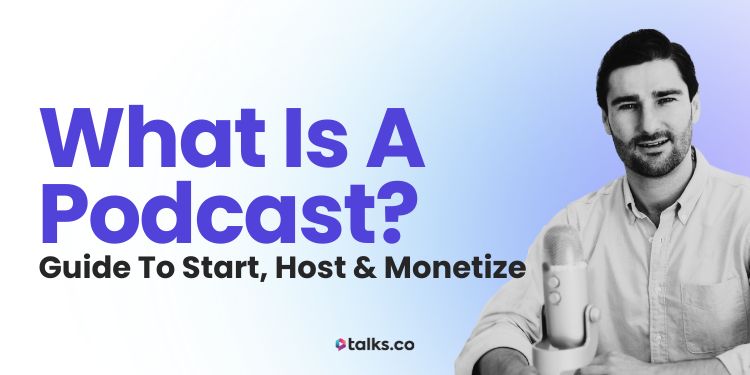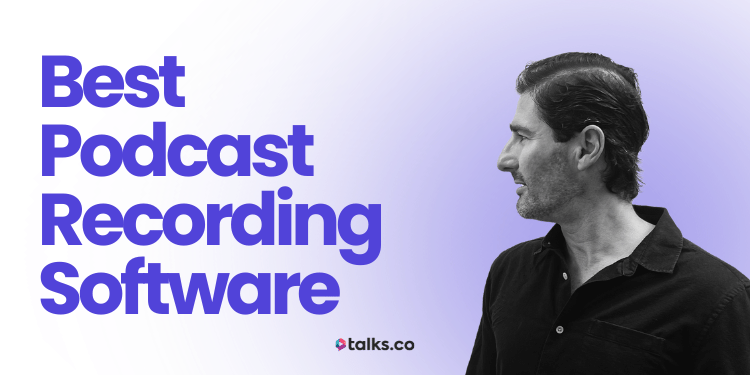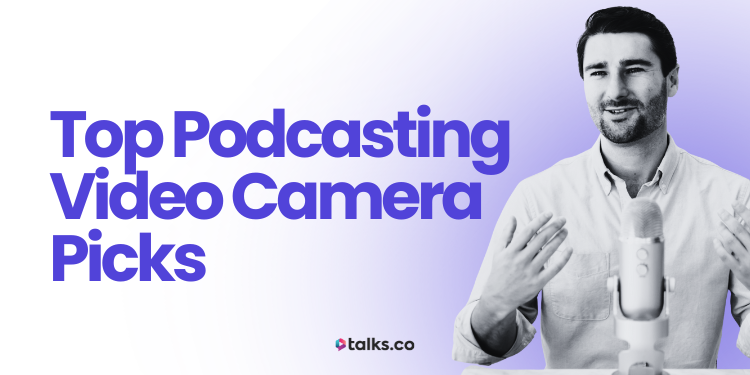Ever catch yourself thinking, “Should I start a podcast?” Maybe you’ve got a message worth sharing, a story that sticks, or clients always telling you, “You should be recording this.”
I’ve been there. When I kicked off my first show back in 2015, I had zero budget, a dodgy webcam, and no clue what I was doing. Just a mic, Zoom, and the guts to give it a go.
And honestly? That was enough to get started.
Since then, I’ve spoken with guests like Anjali Sud, ex-CEO of Vimeo, and been invited onto dozens of podcasts just because I had a platform of my own.
That’s how it works: start one stage, and others open up.
So if you’re wondering what is a podcast, how podcasts work, what gear you actually need, and if starting one’s worth it?
This is your one-stop podcasting 101 guide.
What Is a Podcast?
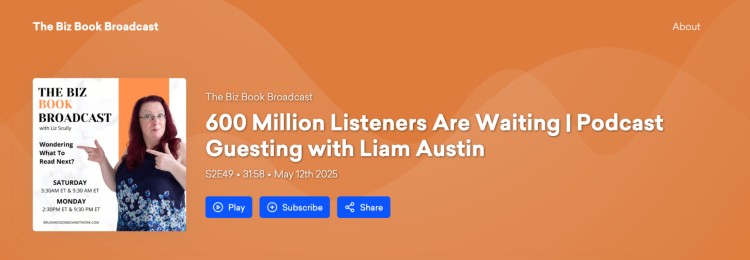
A podcast is a recurring audio series you publish online for people to listen to on demand.
You record your voice, upload it to a podcast host (like Buzzsprout), and that host pushes it out to podcast platforms (like Spotify, Apple, YouTube).
Listeners tune in on the commute, at the gym, or while making lunch. You create it once, and it works for you in the background building trust, reach, and authority over time.
What is a podcast in simple terms?
Think of a podcast like Netflix for your ears. But instead of watching, your audience are listening to you share tips, have conversations, or unpack ideas.
A podcast is a simple, flexible way to get your message out. No camera, no live pressure, no editing degree required.
What makes a podcast a podcast?
Here’s what makes it a podcast and not just a random audio clip:
- It’s a series: Not a one-off recording. Your podcast is episodic and consistent.
- It’s syndicated via RSS: That’s how it shows up on podcast apps.
- It’s on a dedicated feed: You upload to a host, and your feed updates automatically.
- It follows a theme or format: Even when loose, like coaching tips, storytelling, or interviews.
Even if it’s just you sharing thoughts solo in your car, once it’s uploaded and syndicated, it’s a podcast.
What is a podcast example?
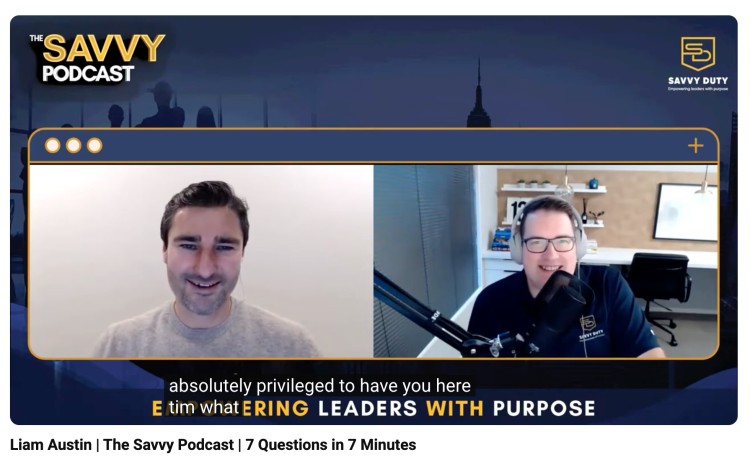
Here’s what different podcast styles actually look like:
- Interview-style: The James Altucher Show. Raw, curious conversations with founders and authors.
- Solo episode: Marketing School with Neil Patel. Quick daily tips from one expert, no guests.
- Story-driven: How I Built This. Behind-the-scenes stories of how entrepreneurs built successful companies.
- Panel-style: The Minimalists Podcast.Two hosts + occasional guests, riffing on good podcast topics from multiple angles.
- Coaching call: Online Business Owner. Features live recorded coaching sessions with listeners.
- Behind-the-scenes: Call Your Grandmother. Comedians interviewing their grandmothers. (Unexpected, but gold.)
What is a podcast show?
A podcast show is the full series; your branded container for all the episodes.
If your podcast was a book, the podcast show is the book itself, and each podcast episode is a chapter.
To set up a show, you’ll need:
- A name: Something clear, searchable, and aligned with your topic.
- Cover art: What shows up in podcast apps and social feeds.
- A short description: What listeners can expect and who it’s for.
- A release schedule: Weekly, bi-weekly, or whatever pace you can stick to.
Example: You launch The Bold Coach Show. The podcast episodes cover sales, mindset, and client growth. Each one fits under your show’s overall theme.
What is a podcast episode?
A podcast episode is one individual recording that lives inside your show.
Some examples:
- A 10-minute solo episode where you break down how to price your first coaching offer.
- A 45-minute guest interview with a course creator who scaled past six figures.
- A 25-minute Q&A where you answer audience questions from Instagram.
- A 30-minute coaching episode where you help a stuck mindset coach find their niche on-air.
- A 90-minute panel episode where you and four guests debate the future of webinars.
Each episode gets its own title, description, and link. Your show might have 10 episodes or 500, but they’re all separate pieces inside the same series.
What is a podcast series?
A podcast series can mean one of two things:
- The full show: Especially if it has a set beginning and end. There’s Land of the Giants where each season covers a different tech giant.
- A themed mini-series: Episodes inside the larger show, like a six-part mini-series on “Fixing Your Morning Routine.”
For example, a business coach might drop a Mindset Reset series every January: Five episodes, one per workday, each focused on a different belief to upgrade.
It’s optional. You can go year-round without “seasons” if that works better for your schedule.
What is a podcast channel?
A podcast channel is your broader platform where your podcast lives (usually on YouTube).
Your channel might include:
- Full video podcast episodes: Think face-to-face interviews or Zoom calls.
- Short clips: Snackable insights or highlights from longer episodes.
- Behind-the-scenes: Studio tours, bloopers, or gear breakdowns.
- Multiple shows: Like a podcast network with different series under one brand.
Example: You run The Conscious Coach podcast and host it on YouTube. Your channel also features clips, reels, and a new show with your co-hosted mastermind updates.
What is a podcast format?
Your podcast format is how you structure and deliver your podcast. It sets the tone, flow, and energy.
Here are the most popular podcast formats
- Solo: You talk, teach, or story-tell on your own. Quick, punchy, and personal. Think: coaching advice, mindset shifts, lessons from experience. Imagine you’re a career coach giving weekly job search strategies in 15-minute solo rants.
- Interview: You bring on a guest, ask questions, and guide the conversation. You can chat with a productivity expert about time-blocking for entrepreneurs.
- Co-hosted: You and a partner co-host and talk back-and-forth. You and your business bestie share stories from running coaching businesses.
- Coaching call/Q&A: You coach someone live or answer listener questions. For example, you help a struggling mindset coach figure out their niche live on air.
- Narrative/storytelling: Edited, story-based podcasting with music and transitions. Think a three-part series on burnout with interviews, voiceovers, and research.
- Panel: A rotating group tackles topics roundtable style, like Tonight’s Conversation and Red Table Talk.
Start with what feels most natural. If you love interviewing others, go that route. If you prefer teaching solo, hit record and teach.
What is a podcast interview?
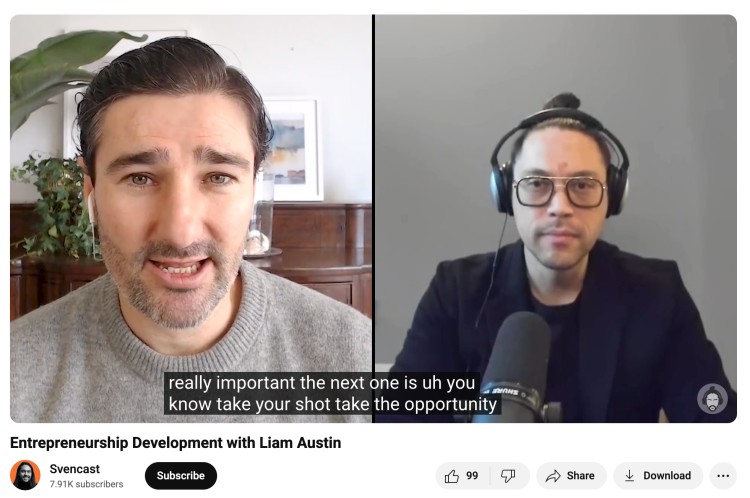
A podcast interview is a recorded conversation between the host and a guest. Often an expert, coach, author, or entrepreneur.
Example: You host a mindset podcast. You bring on a guest who shares how they overcame impostor syndrome while growing their online business. You ask questions, share your own take, and keep the conversation focused.
What makes a good podcast interview?
- Strong topic (specific, not vague)
- Natural flow (not a list of rigid questions)
- Value for the audience (takeaways they can apply)
- Personality (banter, real talk, moments that feel human)
If you’re planning to get booked as a guest yourself (using something like Talks), this is the format you’re most likely to appear on.
What is a podcast script?
A podcast script is your rough outline or full word-for-word script of what you’ll say in an episode.
It helps you stay on track, hit key points, and avoid blank moments. You can keep it loose (just bullet points) or write it all out depending on your style.
For example:
- Intro (30 seconds): Who you are + what the episode is about
- Main content (15 minutes): 3 tips with personal stories
- Outro (1 minute): Call to action + teaser for next week
Scripts save time in editing and make sure your solo episodes sound sharp, not rambly.
If you want help with this part, the Talks podcast script generator gives you a template to fill in, so you’re not staring at a blank doc.
What is a podcast video?
A podcast video is the visual version of your episode. It’s great for social media, YouTube, or adding a face to the voice.
There are different ways to record a video podcast:
- Basic Zoom recording. Simple, effective, and my personal favorite.
- Split-screen interview using tools like Riverside.
- Solo episode with captions using Descript or Premiere.
- Studio-style setup with DSLR camera, softbox lights, and professional podcast equipment bundle.
Let’s say you interview a guest on Zoom. You record the video, pull two to three clips, add captions, and post them to Instagram. That’s a video podcast in action. Same content, more visibility.
Can a podcast have video?
Yes, a podcast can definitely have video. And more creators are doing it. If your podcast includes a video version (with you, guests, or a visual element), it counts as a video podcast.
Examples of video podcasts:
- Diary of a CEO: Shot in a studio, then shared on YouTube and Spotify.
- The Ed Mylett Show: Long-form video interviews with speakers and coaches.
- Impact Theory: Live in-person videos repurposed for audio-only platforms.
Why go visual?
- More ways to repurpose (YouTube, Instagram Reels, TikTok).
- Better connection with the audience (body language, expressions).
- Opens doors for sponsorships that prefer face-to-camera content.
Are podcasts audio or video?
Podcasts can be either audio or video. Or both.
- Audio podcast = traditional format (Spotify, Apple, etc.)
- Video podcast = same content, but with a video layer (YouTube, Spotify Video)
Most common setups today:
- Record one session > export audio and video > upload to both platforms
- Audio-only listeners tune in on the go
- Visual-first fans watch on screens
You don’t have to pick one. Creators like Joe Rogan and Lewis Howes publish in both formats from the same interview.
What is an audio podcast?
An audio podcast is the original form of podcasting. Just you, your mic, and a message. Listeners press play while doing other things (walking, driving, cleaning).
Key traits of an audio podcast:
- No visuals required
- Consumed passively (in ears, not eyes)
- Easier and cheaper to produce than video
Example setup: A confidence coach records 12-minute solo episodes every Monday morning with quick, actionable tips. No camera, no makeup, no editing team.
What makes a podcast good?
What makes a “good” podcast is one people keep coming back to. It’s not just about production; it’s about value and vibe.
What separates good from forgettable:
- A clear, focused topic or niche
- Consistent style and episode length
- Helpful, relatable, or entertaining content
- Audio that’s clean (not fancy, just easy to hear)
- Memorable intro and call to action
Example: A money coach who opens each episode with a client win, teaches one key tip in under 15 minutes, and closes with a freebie offer or resource. Simple. Consistent. Shareable.
What is a podcast on Spotify?
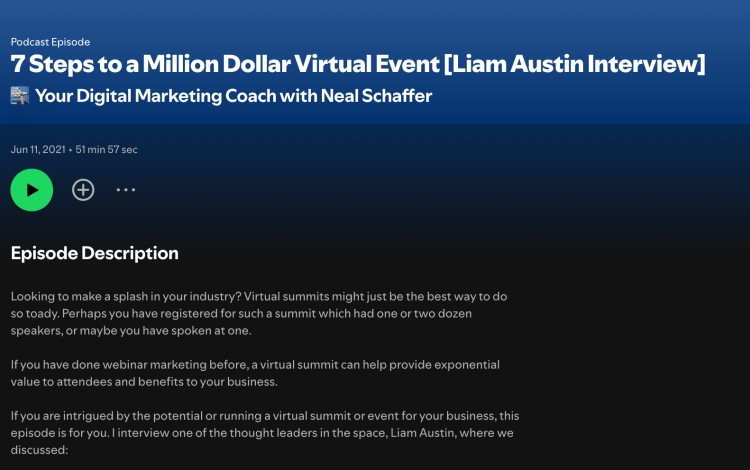
A podcast on Spotify is the same podcast you’d find elsewhere, just hosted on Spotify’s platform.
Spotify podcasts can include:
- Audio-only shows
- Video episodes (Spotify Video feature)
- Episode descriptions, links, and timestamps
Spotify for Podcasters also gives creators tools to:
- Upload directly
- Add Q&A or polls
- Track listener analytics
You publish to Spotify by submitting your RSS feed or using their native upload tool for video.
What is a podcast website?
A podcast website is your podcast’s home base. Think of it as your digital HQ where people can:
- Listen to episodes
- Read show notes or blog versions
- Share links
- Learn about the host
- Book a call or join your email list
Tools to build a podcast website fast:
- Podpage (auto-updates from your feed)
- WordPress with a plugin
- Your host’s built-in website option (like Buzzsprout or Transistor)
Example: A wellness coach adds a blog to her podcast site with embedded episodes and SEO keywords. Each episode becomes searchable content on Google.
What is a podcast feed?
A podcast feed is the list of episodes your audience sees on platforms like Spotify or Apple. Think of it like your show’s playlist where new episodes get added to the top.
A podcast feed includes:
- Episode title
- Description
- Audio file
- Publish date
- Artwork or cover image
The feed is powered by your RSS feed, which updates automatically when you publish.
What is a podcast RSS feed?
A podcast RSS feed is the behind-the-scenes link that distributes your show.
You don’t have to code it. Your podcast host (like Captivate or RSS.com) creates this for you. Once you have it, you submit that RSS link to platforms like Spotify, Apple, and Amazon.
The RSS feed tells platforms:
- Your podcast name and cover art
- Episode titles, descriptions, and audio files
- When a new episode drops
You publish once. It goes everywhere.
What is a podcast hosting platform?
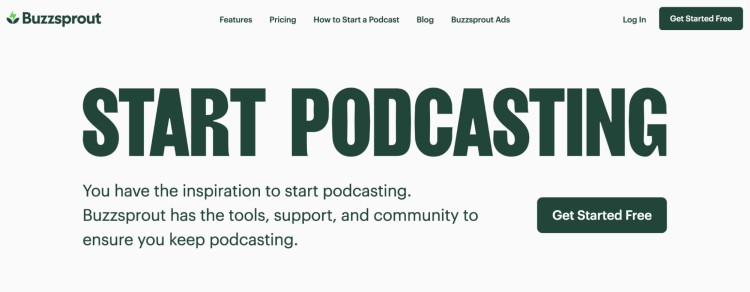
A podcast hosting platform is where your show lives online.
A podcast hosting service:
- Stores your audio and episode data
- Generates your RSS feed
- Pushes your show to listening platforms
- Tracks downloads and listener data
Top podcast hosting platforms:
- Spotify for Podcasters (free and easy)
- Buzzsprout (great for beginners)
- Transistor (ideal for businesses and networks)
- Captivate (built for growth and marketing)
Without a host, your podcast doesn’t get distributed.
What is a podcast platform?
A podcast platform is where people listen to their favorite podcasts and digital audio.
Popular podcast platforms:
- Spotify
- Apple Podcasts
- Amazon Music
- YouTube (for video episodes)
- Google Podcasts (shutting down, but still in use)
Your host (Buzzsprout, RSS.com, Acast) sends your RSS feed to these platforms, and they display your episodes in real time.
Think of your host as the publisher and the platform as the bookstore.
What is a podcast host?
This could mean you, the person who runs the podcast, or the platform that stores and distributes your show.
Podcast host (person):
- Leads the show
- Interviews guests
- Writes scripts or outlines
- Promotes new episodes
Podcast host (platform):
- Stores your audio files
- Sends updates to platforms via RSS
Example: You’re the host of a podcast called The Weekly Pitch, and your show is hosted on Buzzsprout. You run the show, Buzzsprout runs the tech.
What is a podcast studio?

A podcast studio is where you record your episodes. It could be your spare bedroom or a professional-level space with gear, lighting, and soundproofing.
Types of studios:
- Home studio: Blue Yeti, laptop, ring light, pillows for soundproofing
- Mobile setup: Lapel mic, tripod, phone camera (for creators on the go)
- Professional studio: Multiple mics, mixers, lighting rigs, editors
Example: You’re a speaker who interviews guests in person once a month at a rented podcast studio with three cameras and post-production included. The rest of the time, you record solo episodes from your home office.
How Podcasts Work

A podcast is basically an on-demand show you can listen to any time. You hit play, and it feels like you’re part of the conversation.
If you want to know how to record a podcast (or already have one but want to improve), here’s how the process works:
- You record an episode using a mic and recording software (like Riverside or Audacity)
- You upload the audio content to a podcast host (Buzzsprout, Captivate, or Transistor)
- The host distributes it to platforms like Spotify, Apple Podcasts, YouTube, and more
- Listeners subscribe, and new episodes get delivered to their feed automatically
You can run your podcast from a full-blown studio or your phone in a parked car. What matters is the value you bring (e.g., storytelling, insights, entertainment, or connection).
Who creates podcasts?
Anyone with something to say can create podcasts. You don’t need a radio show background, just a clear idea and a bit of consistency.
The most successful podcast creators are typically:
- Solo experts: Coaches, consultants, and educators who teach, share advice, or document their journey.
- Brands: Companies like Shopify and HubSpot run branded shows to reach customers in a more engaging way.
- Media outlets: News organizations like NPR and The New York Times produce top-ranking podcasts.
- Friends or co-hosts: Shows like Armchair Expert or SmartLess thrive on chemistry and casual conversation.
- Celebrities or authors: Many use podcasting to stay relevant, promote books, or share behind-the-scenes stories.
If you have something valuable or entertaining to say, you can start one too.
What is a podcast used for?
Podcasts aren’t just for entertainment. Here’s what they’re used for:
- Building authority: Coaches use them to build trust and warm up leads by sharing frameworks, advice, and client stories.
- Networking: Hosting an interview podcast is a legit way to connect with hard-to-reach guests.
- Community building: Podcasts let you create a loyal base of listeners who trust you and engage regularly.
- Launching offers: Many podcasters promote events, books, or courses to a warm, tuned-in audience.
- Storytelling and content creation: Fiction creators, journalists, and artists use it as a creative outlet.
And from the listener side? They use it to learn, get inspired, solve problems, or just kill time on a walk.
What can a podcast be about?
A podcast can literally be about anything as long as it’s interesting or useful. Here’s what people build shows around:
- Stories: From true crime to fiction (Serial, LeVar Burton Reads).
- Expertise: Business, coaching, tech, or health advice (Smart Passive Income).
- Entertainment: Light-hearted convos or comedy (Armchair Expert).
- Education: How-tos, explainers, deep dives (Stuff You Should Know).
- Lifestyle: Minimalism, productivity, personal growth (The Mel Robbins Podcast).
- Culture: Music, food, relationships (Not Gonna Lie with Kylie Kelce).
You don’t need to be the world’s top expert; just someone with something real to say.
Can a podcast be one person?
Yes, a podcast can be one person. And many successful podcasts are solo. In fact, solo podcasts can:
- Build authority fast. You’re the only voice, so you become the expert.
- Save time. No scheduling guests or editing interviews.
- Be flexible. You can record whenever and go off-script.
Examples:
- The Tim Ferriss Show often features solo Q&As or debriefs.
- The Mindset Mentor by Rob Dial is fully solo and gets millions of downloads.
- JQ’s Audio Journal uses a personal diary format to reflect in real time.
If you’re a coach, teacher, or consultant, solo episodes are a simple way to create value-packed content consistently.
Can a podcast be live?

Yes, a podcast can be live. A live podcast brings a different kind of energy especially if you’re comfortable thinking on your feet.
Live shows are often:
- Used for Q&A: Audience submits questions in real-time.
- Tied to events: Like launches, coaching sessions, or panels.
- More raw: No editing, just you and the mic.
You can also record live, then edit and upload later. This gives you the energy of live interaction with the polish of a recorded show.
Examples:
- Tonight’s Conversation records live events for relationship talks.
- The Daily by NYT sometimes includes live or timely updates.
What you need to listen to podcasts
Here’s what a listener needs to listen to podcasts (no subscriptions or expensive gear required):
- A podcast app: Apple Podcasts, Spotify, YouTube, or Pocket Casts.
- Internet: For streaming or downloading episodes.
- Any device: Phone, laptop, tablet, or smart speaker.
- Optional: Headphones or earbuds for better sound.
Once you subscribe, the app auto-downloads new episodes so you never miss one.
When did podcasts start?
Podcasts started with a mix of ideas, tech, and enthusiasm during the early 2000s:
- Early 2000s: Developers like Dave Winer and Adam Curry added audio files to RSS feeds.
- First podcasters: Christopher Lydon, Curry, and others experimented with the format.
- 2004: The term “podcast” (iPod + broadcast) was coined.
- 2005: Apple added podcasts to iTunes..
- 2014: Serial launched and brought podcasting to the mainstream.
- Today: Over five million shows exist, and anyone can launch one in an afternoon.
What are the different types of podcasts?
There are hundreds of different types of podcasts. But the most popular types of podcasts? These ten you’ll find below:
- Storytelling podcasts. Share real or fictional stories that keep listeners hooked. Example: Serial (true crime), Welcome to Night Vale (fiction).
- Interview podcasts. You host guests and ask the questions your audience wants answered. Example: The Joe Rogan Experience, How I Built This.
- Solo/monologue podcasts. Just you and a mic, sharing insights, opinions, or lessons.
Example: Mindset Mentor, Tim Ferriss solo episodes. - Co-hosted podcasts. Two voices, more banter. Chemistry is key here. Example: Krystal Kyle & Friends, 2 Bears 1 Cave.
- Panel/roundtable podcasts. A group discussing a topic with different takes and personalities. Example: Red Table Talk, Smart Passive Income Podcast.
- Educational/how-to podcasts. You teach something new in every episode. Example: Stuff You Should Know, Online Marketing Made Easy.
- News or daily briefing podcasts. Short updates on current events or trends. Example: The Daily, Up First.
- Coaching or workshop-style podcasts. Host live coaching or solve problems on-air. Example: Making It (with Liam Austin), The Life Coach School.
- Thematic anthologies. New story each episode, tied to a bigger theme. Example: Lore (historical folklore), Snap Judgment.
- Behind-the-scenes podcasts. Offer a peek into shows, projects, or industries fans already love. Example: Office Ladies (The Office recap).
Audio vs. Video Podcasting: What’s the Difference?
Wondering if you need to be on camera to start a podcast? Short answer: no.
You can launch a great show without ever showing your face. But here’s the breakdown so you can decide what fits best:
| Feature | Audio-only | Video podcasting |
| Cost | Cheap setup (mic + laptop) | More gear = more $$$ (camera, lights, software) |
| Gear | USB mic like Samson Q2U | Mic + webcam (like Logitech StreamCam) + lighting |
| Editing | Easier; cut out ums and you’re good | Requires more time for cutting videos, syncing audio, visuals |
| Reach | Spotify, Apple, Pocket Casts | YouTube, Reels, TikTok + all audio platforms too |
| Connection | Voice builds trust | Face on screen builds even more |
| Speed | Record, upload, done | Takes longer to polish and publish |
If you’re just starting, audio is the faster, cheaper, less overwhelming option. You can always add video later once you’re in the groove.
Can a Podcast Make Money?
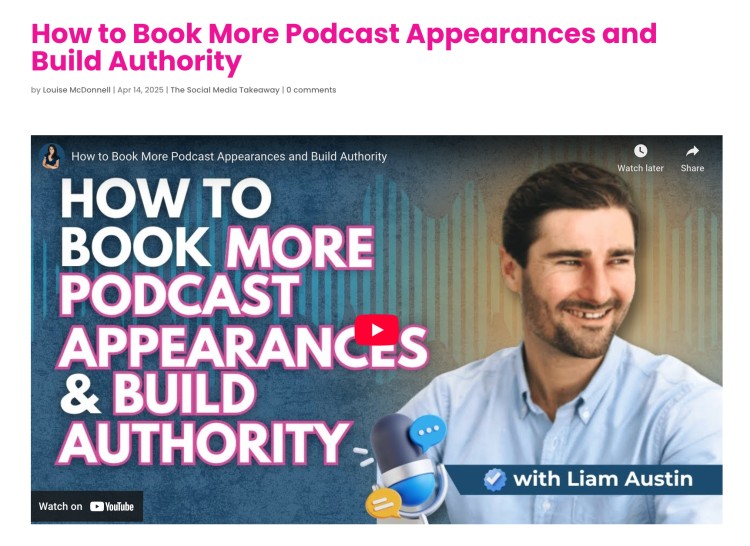
Yes, your podcast can definitely make money. But not right away.
Most podcasts don’t earn much in the beginning. But once you’ve got a clear niche, consistent episodes, and a growing audience, you’ve got options.
Here are 15 ways real podcasters are getting paid:
- Sponsorships: Brands pay you to mention their product or service in your episodes. Rates depend on your audience size and niche. Example: 5,000 downloads at $20 CPM = $100 per ad spot.
- Affiliate marketing: You recommend tools, software, or books you actually use and already love. You get paid every time someone buys using your link.
- Listener donations: Set up Ko-fi, Buy Me a Coffee, or Locals and let loyal listeners support you directly.
- Paid subscriptions: Platforms like Spotify and Apple Podcasts let fans pay for early access to listen to a podcast, bonus content, or ad-free episodes.
- Merchandise and digital products: Sell templates, guides, checklists, or online tools on Gumroad. No need to stock physical merch.
- Online courses: Teach what you know. Podcasters often turn popular topics into paid online courses.
- Coaching or consulting: Your podcast builds authority. Listeners become leads. You offer calls, audits, or done-for-you services.
- Live events: Run a paid webinar, host a meetup, or charge for access to a behind-the-scenes Q&A.
- Virtual summits: Pull together guest experts, record sessions, and charge for replays or VIP upgrades. I built most of my own audience this way.
- Podcast ads (programmatic): Platforms like Podbean, Spreaker, and RedCircle place ads in your show even with a small podcast listening audience.
How Do You Start a Podcast?
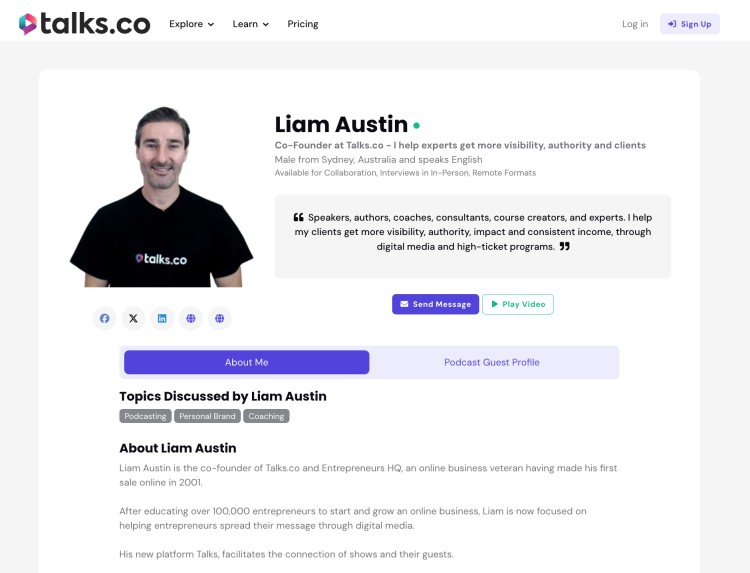
Starting a podcast is simpler than most people think. No need for a studio, fancy gear, or a full team behind you. Just follow these steps and you’re off:
- Choose your niche or focus: What do you want to talk about? Who’s it for? Go specific like coaching tips, business mindset, fitness for dads, etc.
- Pick a format that fits your style: Solo episodes? Guest interviews? Coaching calls? Choose what feels natural. You can always mix it up later.
- Come up with a name + cover art: Go for something clear, easy to remember, and relevant to your topic. Your cover should stand out in a scroll.
- Record your first few episodes: Start with 3-5 episodes so you’ve got something for people to binge. Use Zoom, Riverside, or your phone mic to get started.
- Edit the basics (or don’t): Cut out major mistakes or long gaps. Tools like Descript make this easy. Or keep it raw and hit publish.
- Upload to a podcast host: This is where your episodes live. Platforms like Buzzsprout, Spotify for Podcasters, and Captivate send your show to Apple, Spotify, and more.
- Submit to podcast directories: Most hosts handle this automatically, but double-check you’re on Spotify, Apple Podcasts, and YouTube (if you have video).
- Promote your show: Post it on socials, publish your speaker one sheet on Talks, email your list, tell your clients. You don’t need a big push, just a consistent one.
- Stay consistent: Once a week is plenty. You’ll figure out what works as you go. Show up, improve, repeat.
Can I create my own podcast?
Yes, 100%. You don’t need a studio, a media background, or a huge following to start a podcast. What you need is:
- A clear point of view: Something you care about. Something your people need to hear. You can be a coach, creator, consultant or just someone with real stories and lessons to share.
- A way to record: This could be Zoom, your phone, or a budget mic plugged into your laptop. Plenty of top podcasters started this way.
- A bit of consistency: Weekly or bi-weekly is enough. You don’t have to podcast forever, just long enough to find your voice and build some momentum.
- A reason behind it: Are you podcasting to grow your brand? To land clients? To connect with other experts? Having a clear goal makes the whole thing more focused and more fun.
How much is a podcast set up?
A podcast setup can cost anywhere from $0 to $500+, depending on how scrappy or polished you want to go.
Here’s the breakdown on how much it costs to start a podcast:
| Setup level | Gear needed | Cost estimate |
| Bare bones | Phone mic + free Zoom recording | $0 |
| Starter | USB mic + headphones + free software | $70-$150 |
| Expert | XLR mic + audio interface + lighting | $300-$500+ |
Don’t overthink it. Most top podcasters didn’t start with top podcast equipment bundle. They leveled up over time and upgraded as they went.
What podcast equipment do I need?
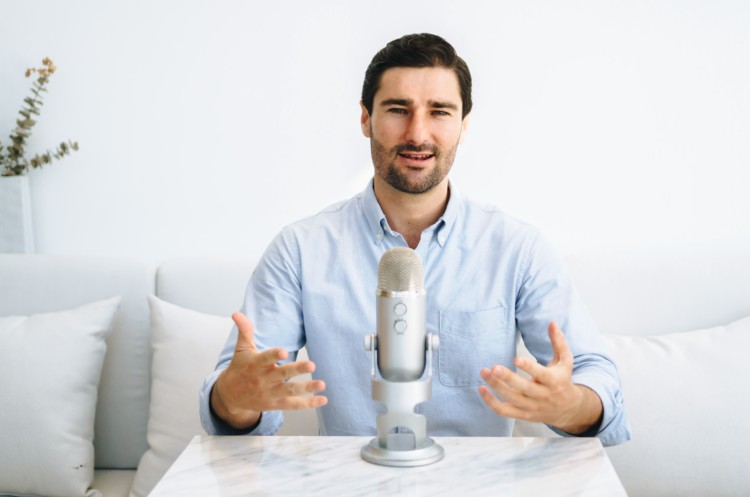
Here’s what most beginners start with:
- USB microphone: Simple plug-and-play mics like the Samson Q2U or Blue Yeti work great.
- Headphones: Any over-ear pair will do. Helps you catch background noise and audio glitches.
- Recording software: Use Audacity (free), GarageBand (Mac), or Riverside if you’re interviewing guests. (Here’s a full list of the best podcast recording software to help you pick.)
- Hosting platform: Needed to get your podcast onto Spotify, Apple, etc. (Buzzsprout and Captivate are beginner-friendly.)
- Optional upgrades: Pop filter, boom arm, ring light, foam sound panels, and a DSLR for video podcasts.
Start lean. Upgrade to the best laptop for podcasting and other equipment when the content’s flowing and the audience is growing.
The best tool to start your podcast
Spotify for Podcasters is hands-down the easiest free option for beginners.
Here’s why:
- Free hosting
- Built-in recording and editing
- Direct distribution to Spotify + Apple
- Listener support features (for donations)
- Simple analytics
You can also explore:
- Buzzsprout: Clean interface, great for beginners, free plan available.
- Riverside: Best for video + remote interviews (studio-quality recordings).
- Podpage: Instantly creates a podcast website from your feed (zero coding needed).
- Descript: Transcribes, edits, and adds captions to your podcast videos.
Should You Start a Podcast?
If you’ve been circling the idea of launching a podcast, this is your sign to take it seriously.
You don’t need a million followers, a fancy mic, or studio lighting to get started. You just need a reason, a voice, and a bit of follow-through.
8 reasons to start a podcast
Still on the fence? Here’s why starting a podcast might be one of the smartest moves you can make for your brand, business, or creative outlet.
- Build real trust with your audience: Your voice builds connection faster than social posts. People start to feel like they know you and that makes them more likely to buy, share, or reach out.
- Create once, repurpose everywhere: One episode becomes a blog, a YouTube clip, five Reels, and an email. Podcasting is the most efficient content you’ll ever make.
- Get in front of bigger names: Hosting lets you invite guests who’d normally ignore your DMs. It’s a networking cheat code.
- Sell without selling: You don’t need to pitch hard. Just teach, tell stories, and share real results. Your offers sell themselves.
- Control your own platform: Unlike social media, your podcast feed is yours. No algorithm stress. No risk of being shadowbanned or buried.
- Stand out from the noise: Not everyone’s willing to show up on the mic. A podcast builds authority fast and sets you apart from coaches, creators, and consultants stuck on Instagram.
- Bring leads in on autopilot: New listeners find your old episodes months or years later. Your podcast works even when you’re offline.
- Document your growth: Even if no one listens at first, you’re building an archive of ideas, lessons, and breakthroughs that grow with you.
Should you start a new podcast pros and cons
Thinking of launching a new show or wondering if it’s even worth the effort? Here’s a quick hit list of what’s great (and what might trip you up).
Pros:
- Low barrier to entry: You can launch one with free tools and basic gear.
- Builds your personal brand: Your voice becomes the hook that draws people in.
- Compounds over time: Each episode adds value, SEO, and authority.
- Opens unexpected doors: Speaking gigs, client referrals, collabs, and podcast guest invites often follow.
Cons:
- It takes consistency: Weekly episodes mean you’ve got to show up even when life’s busy.
- It’s a long game: Most podcasts don’t explode overnight. The payoff is slow but real.
- Editing can be a time suck: Unless you outsource, the backend can eat up your schedule.
Bottom line? If you’ve got something valuable to say, a podcast is one of the smartest ways to build a brand and grow your audience long-term.
Give Your Opinions a Paycheck
Still wondering what is a podcast and whether it’s worth starting one?
If you’ve got something real to say and you want a way to build trust, attract leads, or grow your brand, this is it.
Podcasting isn’t just for celebs or studios anymore. It’s for coaches, creators, and experts who want to be heard without chasing algorithms.
All it takes is one show to open the right doors.
Want a shortcut?
Create your Talks creator profile today to get featured on top podcasts and start attracting leads by sharing what you already know. No audience needed. Just your voice.
Let’s get it out there.
Sign Up for Free at Talks Today
